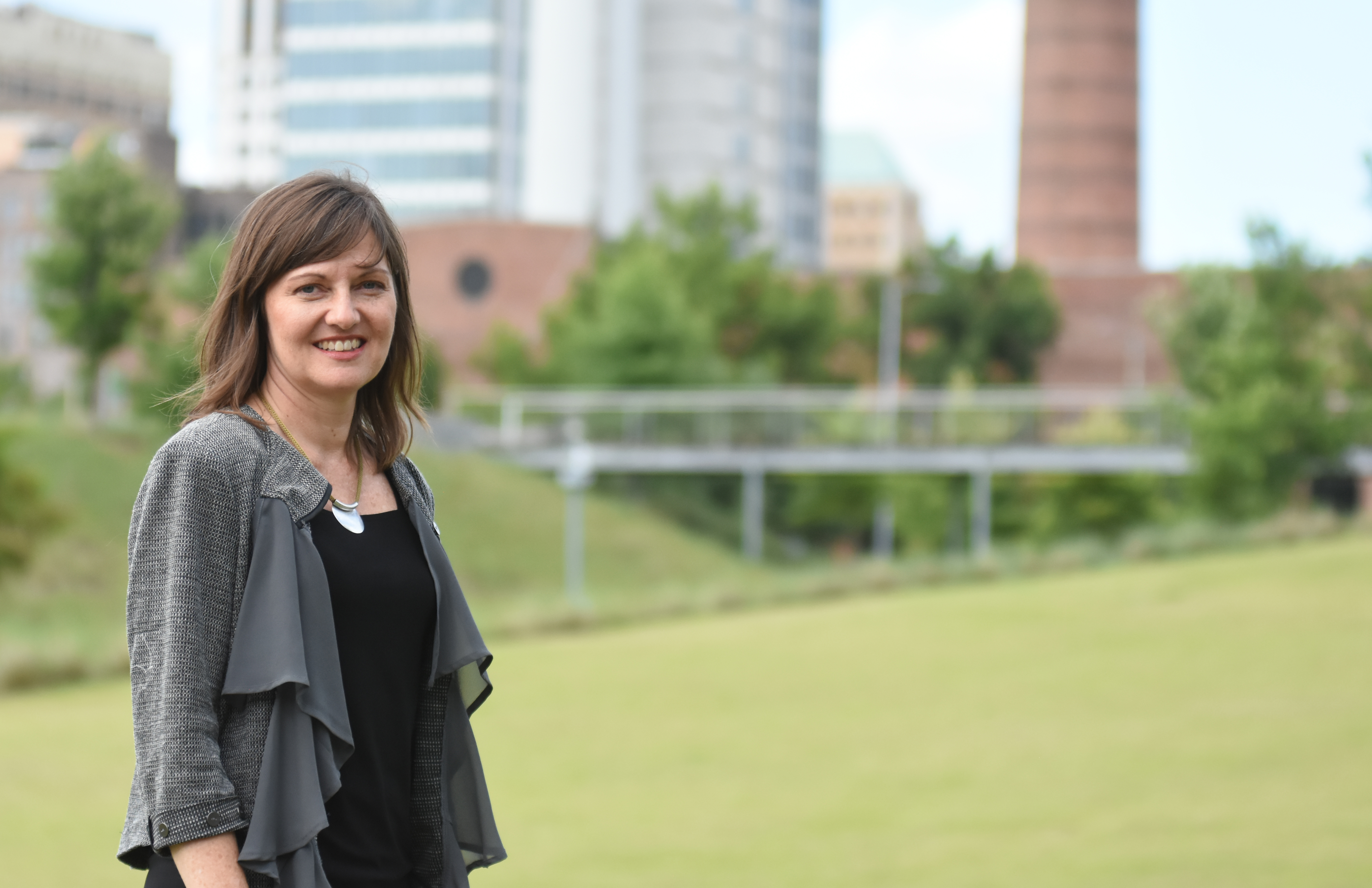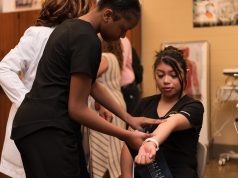
By Erica Wright
The Birmingham Times
Railroad Park in downtown Birmingham, which opened in 2010, was not an overnight success. It took years of meetings, fundraising, planning, and building to transform a once-vacant, weedy lot into a rolling landscape of flowers, trees, lakes, streams, and lawns.
Elizabeth Barbaree-Tasker, a member of the initial board of directors for the Friends of the Railroad District (FoRRd)—an organization formed in 2001 to promote revitalization along the railroad corridor and raise funds for the eventual development of the linear park—was there at the beginning.
Bob Greene, an environmental lawyer at the Bradley Arant law firm and a train buff, was founding Board Chair and President of FoRRd.
“We just started a grass roots effort to get people excited about this idea,” said Barbaree-Tasker, currently Chief of Operations & Finance at REV Birmingham, Inc. “We were still young in our careers and didn’t have as many responsibilities, so we just started meeting … to push this idea and to make this park idea a reality.”
A Magnet
Downtown Birmingham’s Railroad Park, situated along First Avenue South between 14th and 18th streets, opened in 2010 and has become more than just a park—it’s become a magnet for economic development that made possible nearby Regions Field and the adjoining Negro Southern League Museum, as well as surrounding restaurants, condos, offices, and other businesses. More than 400,000 residents and guests participate in park programs and activities each year.
The idea to create a park along the downtown rail corridor dates back to the 1970s, long before FoRRd was founded. The concept was inspired by the presence of a collection of historic railroad locomotives, cars, and equipment owned by the Heart of Dixie Railroad Club, a railroad-history museum “dedicated to the preservation, restoration, and operation of historically significant railway equipment.” The collection was moved in the 1990s, but the idea remained.
Larry Watts, a member of the Regional Planning Commission of Greater Birmingham, continued to push the idea with involvement from the Auburn University Center for Architecture and Urban Studies. That led to a federal grant that enabled the city of Birmingham to purchase the bulk of the land used for the first phase of park development in 1997.
FoRRd’s Founding
FoRRd was formed to get community leaders on board to promote revitalization along the railroad corridor and to raise funds for the eventual development of a linear park incorporating the city’s parcel. Tasker remembers FoRRd traveling the city to pitch the idea. The group held fundraisers that brought in about $75,000 and received funding from grants and community leaders to develop a conceptual master plan.
“By that point, we had gained the interest of [Birmingham lawyer] Giles Perkins,” said Tasker. “After that is when Tom Leader [of the Berkely, Calif. Tom Leader Studio, the landscape firm behind the park’s design], initially got involved with the project.”
Perkins, credited with the vision for the park, was the last Board Chair of FoRRd. He was also founding chair of the Railroad Park Foundation, which is the organization that runs the park now.
“The success of the park exceeds our wildest expectation,” said Perkins, a partner with Adams Reese law firm. “We wanted to give Birmingham not just a beautiful park but a place that would renew our hope and shared vision. It has done that. It is a success because we built it together and we love it together. We are proud of Railroad Park.”
After developing conceptual plans and conducting market studies and projections, FoRRd had enough data to convince donors. Birmingham Mayor Bernard Kincaid presented the conceptual designs at the 2006 meeting of the Mayor’s Institute for City Design. And in the fall of 2006, he hosted a groundbreaking at the project site with members of the City Council, Jefferson County Commission, FoRRd, the Community Foundation of Greater Birmingham, and Brantley Visioneering. A week later, Leader was given a $1.1 million contract to develop construction documents for phase 1.
FoRRd began to take a backseat to many other drivers of the project, Tasker remembers.
“We sort of took the seed that was planted and helped it grow from a grass roots perspective,” said Tasker. “The people who then took on the community investment of making it a multimillion dollar investment with a true private and public partnership were the ones who took on that level of leadership. The park couldn’t have happened without that.”
Though Mayor Kincaid held a groundbreaking in 2006, building didn’t officially begin until 2008, after some updates to the planning.
Phase 1
Brantley Visioneering served as project manager for phase 1 of the park. Before the groundbreaking, Brantley had presented plans to the city for implementation of the conceptual design and a tentative schedule for work on phase 1. After the groundbreaking, $12.5 million had been pledged for the project. After taking office in 2007, Birmingham Mayor Larry Langford won approval for his Birmingham Economic and Community Revitalization Ordinance to help with construction of the park.
Railroad Park opened in the fall of 2010 to great acclaim, and it quickly began receiving regional and national awards. Since it opened, the park has served as a regional hub for residents and visitors that “creates vibrancy, cultivates civic pride, supports economic development, strengthens community, fortifies health and wellness, catalyzes progress, and inspires hope,” said Railroad Park Foundation Executive Director Camille Spratling.
Tasker said she was excited to see all the hard work that went into the park when it opened.
“I just go and enjoy it and marvel every time,” she said. “The diversity of people, the number of visitors, and just seeing how cool it is. I have a good time. I’m proud of what it has become.”
‘Lasting Memories’
Today, Railroad Park is a destination for both residents and guests of Birmingham, with more than 400,000 people participating in park programs and activities each year. The park has won the Urban Land Institute’s Urban Open Space Award, it was named one of USA Today’s 10 Best Parks, it was awarded the Society of American Travel Writers’ Phoenix Award, and most recently it was recognized by Time/Money magazine as the Best Park in Alabama.
“Railroad Park is truly Birmingham’s front lawn, and we’re grateful to partner with the city of Birmingham to provide a free, international-award-winning attraction to Birmingham’s residents and visitors,” said Spratling. “We love bringing the community together through hundreds of events and by providing an attraction where lasting memories are made. We’re proud to be an economic driver, event venue, community builder, and most importantly a park that means a great deal to people across our great city.”
For more information, visit www.railroadpark.org.
Corrected at 12:06 p.m. on July 5, 2018 to clarify the founding chairmen of the Railroad Park Foundation and the Friends of the Railroad District (FoRRD).




